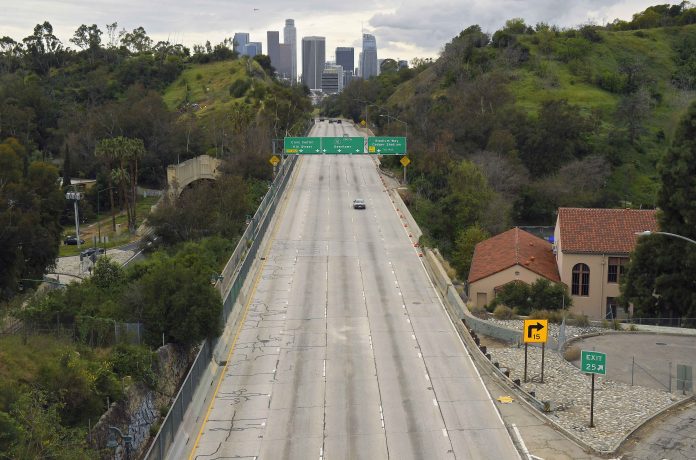
By KATHLEEN RONAYNE
Associated Press
SACRAMENTO, Calif. (AP) — California’s planet-warming emissions dropped nearly 9% in 2020 compared to the year before as pandemic restrictions kept people at home, out of their cars and away from the workplace for much of the year.
The data released Wednesday marks California’s largest single-year emissions drop and tracks with a similar reduction nationwide. An official cautioned that the data can’t be used as a marker for future trends because the pandemic caused unprecedented yet temporary economic changes.
“This year will be looked at as an outlier,” Steven Cliff, executive officer for the California Air Resources Board, told reporters ahead of the data’s release.
Indeed, data from the Global Carbon Project pointed to a rebound in global emissions 2021 once pandemic restrictions across the world began to ease.
Much of the drop came from fewer people driving in the first months of the pandemic, when schools and office buildings shut down and Democratic Gov. Gavin Newsom ordered people to stay home. Emissions from passenger cars, delivery trucks and other forms of transportation are by far California’s largest source and the most stubborn to crack. But they fell by 16% in 2020, according to the air board.
Miles driven in light-duty passenger cars dropped a steep 44% in April 2020 compared to the same month the year before, said Nicole Dolney, head of the air board’s emissions inventory branch.
Elsewhere, industrial emissions fell 9% as demand for oil and gas production and refining fell. Residential and commercial emissions fell 4%, likely because warmer weather meant homes and businesses turned their heaters on less, she said.
California is at the forefront in many areas of U.S. climate policy, adopting some of the earliest and most aggressive targets for reducing greenhouse gas emissions that fuel climate change. By 2045, the state has committed to carbon neutrality, to be achieved by drastically lowering emissions from vehicles, buildings and other sources, and relying on technology to suck the remaining carbon out of the air.
At Newsom’s direction, the air board recently passed a policy to end the sale of most new gas-powered cars in the state by 2045.
Altogether, California has some of the lowest per capita emissions among states. In 2020, the state accounted for about 6% of total U.S. emissions, based on comparisons to EPA data. But the state, with roughly 39 million people, is home to 12% of the country’s population.



















